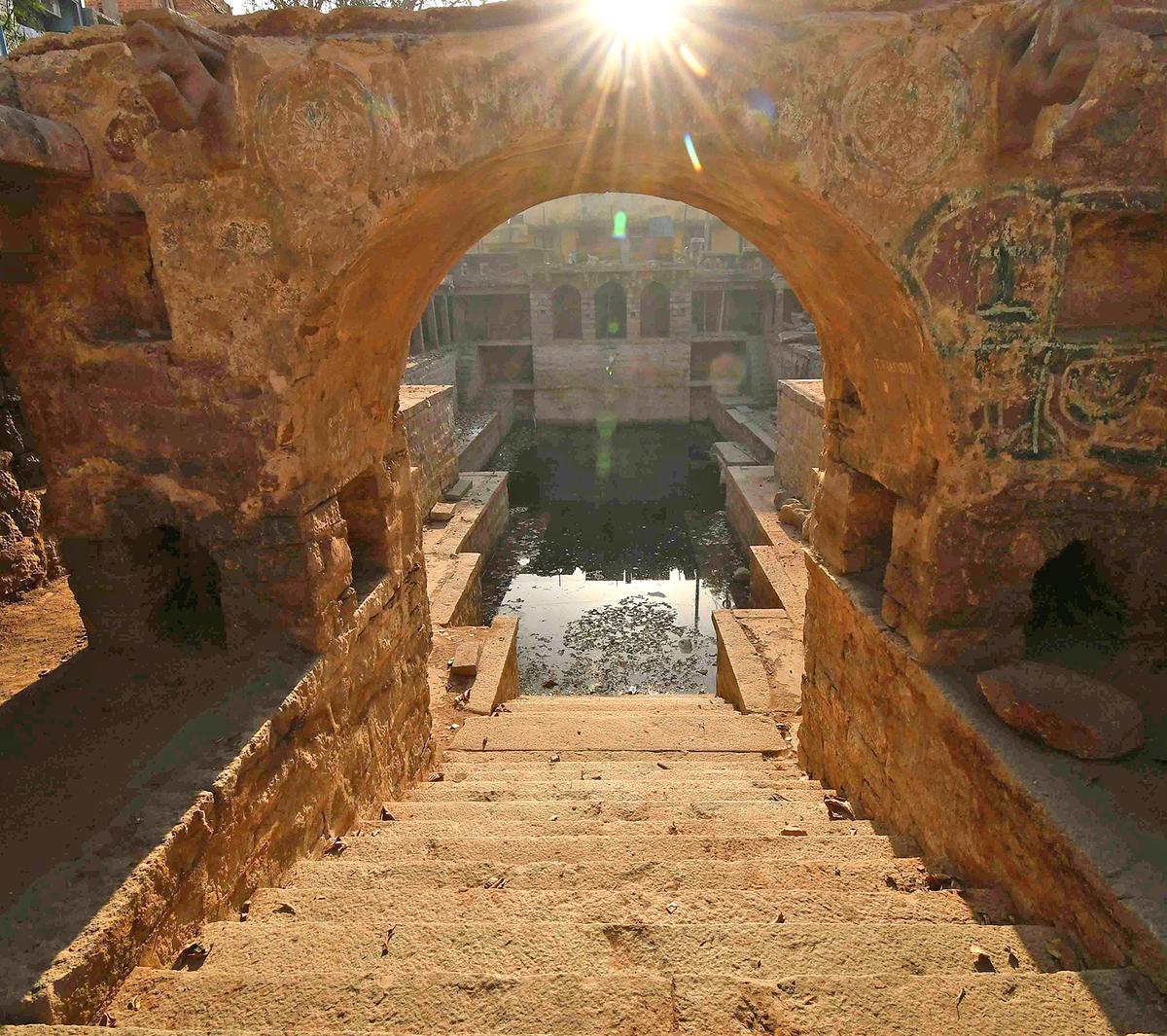
Bansilalpet stepwell transformed from a trash heap to a cultural space
The Hindu
The precinct now has an interpretation centre, a tourism plaza, an amphi-theater, and plans are afoot for a café in the area
The Bansilalpet model village has got back the old hub of stepwell which has been restored by the Telangana government at an approximate cost of ₹2.6 crores. In addition to the stepwell, the precinct now has an interpretation centre, a tourism plaza, an amphi-theater, and plans are afoot for a café in the area.
“We started the work in June 2021 when I showed the possibilities of using rain-water harvesting pits to prevent urban flooding. I was interested in restoring wells as water harvesting structures. There was little evidence of the well and it was in the process of being converted to a parking lot,” says Kalpana Ramesh who has worked to restore the stepwell.
On Saturday, workers were giving a fresh coat of paint to homes in the neighbourhood which has been transformed from a derelict rundown area with godowns and shops to one where children can be seen playing on the cobblestone streets around the park and stepwell.
“Once it is opened, we will go and play inside, the way we used to do in the park,” says Arif, a small boy cycling in the street.
Ramadevi and her husband climb the first floor of the tourist centre overlooking the well and share their sense of pride.
“Our area looks totally different. We feel proud about the change. We never thought the garbage mound will ever go away,” says Badresh, who runs a tailoring firm in the area. “The year Balakrishna’s Muddula Mavayya (1989) was released, one of his fans Uppaliah died in the well. That changed everything and people started dumping waste and it got filled up,” informs Badresh.
The six-level stepwell has not been dated with certainity. “The well has similarities in plan style to ones dug during Kakatiya period. Based on that we assume it was built and developed over centuries,” says architect Madhu Vottery, who did the initial research on dating the stepwell.













